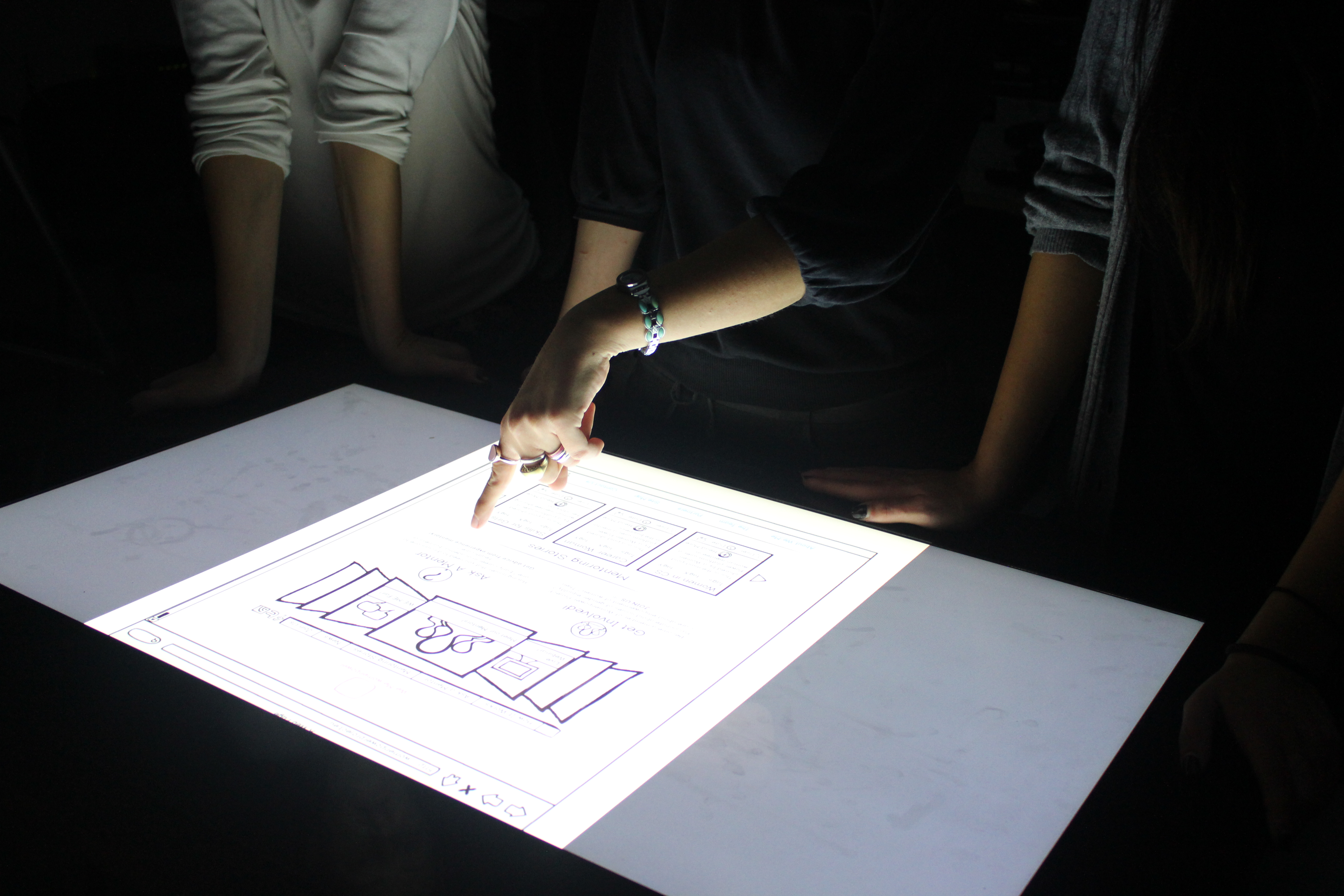Cyprus interaction lab
Issue: XXIII.3 May + June 2016Page: 16
Digital Citation
Authors:
Panayiotis Zaphiris, Andri Ioannou, Antigoni Parmaxi, Christina Vasiliou
How do you describe your lab to visitors? The Cyprus Interaction Lab is an interdisciplinary research lab dealing with topics in humancomputer interaction, educational technology, and inclusive design. The lab is the first of its kind in Cyprus; even though it is relatively new, it already stands out with high-quality research and facilities. We design with people and the community in mind. We aim to understand the significant supportive and mediating role of technology in promoting learning, communication and collaboration, and social change and inclusion in varied circumstances and contexts.
What is a unique feature of your lab? We have recently been active in the important area of technology-enhanced peacemaking and peacebuilding research and development. As Robert Capa once said, "If your photos aren't good enough, then you're not close enough." Taking this message to a research context, if your understanding of a phenomenon or a culture is not sufficient, then you are not close enough. Being located in Cyprus, a country with a long history of long-lasting conflict and division, we have an incredible opportunity to unpack the potential of various emerging and interactive technologies to positively impact our society. Our work gives us the opportunity to explore a phenomenon at its heart and to explore the opportunities that such technologies can bring.
How many people are in the lab, and what is the mix of backgrounds and roles? We are a team of 14 researchers: one full professor and two faculty members who lead the lab, three post-docs, and eight doctoral students. About two or three interns join us every semester. People come from various backgrounds—multimedia and interaction design, computer science, communication, product design, learning and instructional technology, psychology, among others. This complementary expertise across educational technology and humancomputer interaction allows us to create excellence in our common cause, designing technology that can positively influence people's lives.
Briefly describe a day in the life of your lab. A typical day is usually quiet. People in the lab do not always have fixed working hours, but for tight deadlines we can pull off amazing all-nighters. Most ideas are captured and refined through hallway discussions and impromptu brainstorming sessions. We have regular group meetings, project presentations, and invited talks both internal and external. During the year we organize one or two major events that attract between 300 and 500 people, and although planning them is a large amount of work, we love doing this and passing knowledge on to our community. We like initiating each semester with a full-day brainstorming activity between all lab members on how to improve our lab. At the end of every semester, we usually have a group lunch to wrap up and reflect on our work in a positive way.
An irreplaceable feature of our lab is its interactive tabletop surfaces.
What is one feature of your lab that you could not do without? Other than its people, an irreplaceable feature of our lab is its interactive tabletop surfaces. In addition to using them in research studies, we work with them during lab meetings and use them for creative brainstorming (with our own ideasMapping application) and tracking the development of a product/project/service design (using our own ideaSpace application). These tabletop applications bring us closer together around a common target, making us feel much more productive and structured in our activities.
What is the one thing you see as most important about the work you do there? Significant interest in the role of technology in peacemaking and peacebuilding has started to appear only recently. As mentioned earlier, we are proud to engage in this type of work, helping to unpack the mostly unexplored potential of emerging technology to enable people in conflict to work together toward reconciliation. We feel that our work at the Cyprus Interaction Lab serves an important purpose within the area of using technology for social change and inclusion.
http://cyprusinteractionlab.com/
 Figure. Engino and Lego Mindstorms robots used in our research on teaching computational thinking in schools and higher education.
Figure. Engino and Lego Mindstorms robots used in our research on teaching computational thinking in schools and higher education.
 Figure. Collaborative working area and tools for design and project brainstorming sessions.
Figure. Collaborative working area and tools for design and project brainstorming sessions.
 Figure. Using our ideasMapping tabletop application for collective brainstorming.
Figure. Using our ideasMapping tabletop application for collective brainstorming.
Copyright held by authors
The Digital Library is published by the Association for Computing Machinery. Copyright © 2016 ACM, Inc.



